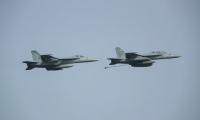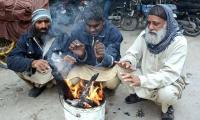The Inspector-General of the Australian Defence Force Afghanistan Inquiry was always going to make for a gruesome read – and that was only the redacted version.
The findings of the four-year investigation, led by New South Wales Court of Appeal Justice and Army Reserve Major-General Paul Brereton, point to “credible evidence” that 39 Afghan non-combatants and prisoners were allegedly killed by Australian special forces personnel. Two others were also treated with cruelty. The Report recommends referring 36 cases for criminal investigation to the Australian Federal Police.
The Report goes into some detail about various practices adopted by Australia’s special forces in Afghanistan. The initiation rites for junior soldiers tasked with “blooding” – the first kill initiated by means of shooting a prisoner – come in for mention. “This would happen after the target compound had been secured, and local nationals had been secured as ‘persons under control’.” “Throwdowns” – equipment such as radios or weapons – would then be placed upon the body. A “cover story” would thereby be scripted “for purposes of operational reporting to deflect scrutiny.”
A “warrior culture” also comes in for some withering treatment, which is slightly odd given the kill and capture tasks these men have been given with mind numbing regularity. “Special Force operators should pride themselves on being model professional soldiers, not on being ‘warrior heroes.’” When one is in the business of killing, be model about it.
As with any revelation of war crimes, the accused parties often express bemusement, bewilderment and even horror. The rule at play here is to always assume the enemy is terrible and capable of the worst, whereas somehow, your own soldiers are capable of something infinitely better. “I would never have conceived an Australian would be doing this in the modern era,” claimed Australian Defence Force Chief General Angus Campbell.
History has precedent for such self-delusions of innocence abroad. The atrocity is either unbelievable, or, if it does take place, aberrant and capable of isolation. The killing of some 500 unarmed women, children and elderly men in the Vietnamese hamlet of My Lai on March 16, 1968 by soldiers of the US Americal Division was not, at least initially, seen as believable.
When it came to light it was conceived as a horror both exceptional and cinematic. A veteran of the Twenty-Fifth Infantry Division went so far as to regard My Lai as “bizarre, an unusual aberration. Things like that were strictly for the movies.” The investigating subcommittee of the House Armed Services Committee responded to My Lai in much the same way, suggesting a lack of sanity on the part of the perpetrators. The massacre “was so wrong and so foreign to the normal character and actions of our military forces as to immediately raise a question as to the legal sanity at the time of those men involved.”
Excerpted from: 'Skewed Responsibility: Australian War Crimes in Afghanistan'.
Counterpunch.org
There are over 11 million Pakistanis settled abroad, out of which around six million work in Gulf and Middle East
This year alone, US Treasury would have to roll-over $10 to $14 trillion in maturing short-term debt
Tear gas no longer marks just protest sites; it paints entire cities as battlegrounds but then again, PTI did it first
Political structures and governance systems have been central to economic and social development
It is confirmed now 40 Pakistanis had died after boat of migrants had capsized in sea near Greece
Many people believe that in future, AI will play an even more significant role in their lives







